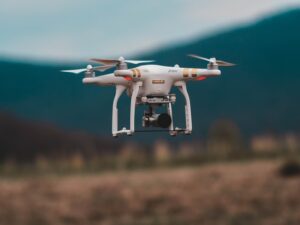Table of Contents
Business Astrology by Hirav Shah : What Are The Technology Trends That Will Dominate The Construction Industry In 2020-21?
In the past, the construction industry was characterized as a traditional and one that is resistant to change. However, over the last few decades, accelerations in technology have introduced a tremendous transformation in the industry. Coming back to the current times, it can be said that the construction industry is under a significant paradigm shift.
Well-known, celebrated Astro Strategist cum Business Astrologer Hirav Shah whose goal has always been to help the entrepreneurs in the construction industry by giving them ideas and strategies to be successful. He feels lucky to be part of an industry where his “job” allows him to see the satisfaction of accomplishment when people follow through with what he advises them to reach there.
In this column, Hirav Shah who is also a famous real estate strategist discusses the top 6 emerging technology trends that could transform the construction process in the coming years.
Drones or Unmanned Aerial Vehicles
Hirav Shah explains, “Also known as Unmanned Aerial Vehicles, Drones are no longer only a hobbyist gadget, they are now emerging as a widely used technology construction industry. The drone industry is forecasted to grow to billions by 2021.”
They assist with monitoring and inspection bringing the following advantages when deployed in construction sites:
Entirely sweep a large project in a matter of a few hours gathering the required data rather than collecting the same data in many days or weeks on foot.
Easily helps to monitor viewpoints that are inaccessible for humans normally. This allows drones to detect problems that are hidden from human sight.
Improve safety by gathering observation and information that might expose surveyors to injury.
With no need for surveyors, a drone can even achieve significant cost savings by enabling faster supervision. With the use of drones, construction and engineering companies can supervise multiple projects simultaneously. UAVs can also help with emergency situations like the COVID-19 outbreak by limiting the need for personnel.
For collecting information advanced drones can be used even during harsh weather conditions saving a lot of time.
Augmented Reality
“AR enables a user the ability to visualize the world through a camera lens. The construction industry has started adopting Augmented Reality and in the near future is said to revolutionize construction projects,“ says Hirav Shah. A computer-generated image is superimposed by AR and can be fed to VR to replace the real world with the computer-generated image in a simulated environment.
Displaying key information about the equipment and display warnings for nearby areas at risk is the capability of AR. For example, an AR lens can detect surfaces that are at high temperatures or are electrically charged.
Through a camera lens, imagine the power of visualizing the real world with desired elements. Even before the project is finished, a completed project can be overlaid on an empty site or an existing building to enable clients to see the final result.
Connected Devices
Hirav Shah tells, “The use of sensors to manage and monitor a
building effectively is nothing new. Managing all the data, however, has been a real challenge in construction projects. The Internet of Things brings connectivity to all types of devices that are used in construction including tools, equipment, and even gears work by personnel.”
Abundant data can be generated by IoT that can be used for different purposes like:
Live Monitoring for activities to prevent accidents and improve efficiency.
For improving overall efficiency tracking the performance of equipment and tools to reveal potential ways.
Connected devices coupled with GPS tracking can benefit greatly especially for monitoring equipment that travels a long distance between projects. The project owner can know the exact location of the equipment when equipped with telematics. This enforces efficient fleet management and also prevents theft.
Building Information Modeling (BIM)
When used in construction projects, BIM can add a detailed level ranging from broad geometric representation to an accurate building model. BIM uses software that allows project managers to design the buildings in 3D and also creates several layers of metadata including the MEP layout of the building which can all be rendered in a collaborative workflow with increased accuracy and efficiency.
Hirav Shah elaborates, “BIM is one of the most powerful tools for handling and preventing construction waste at the design stage. BIM can detect component clashes so engineers can make better decisions and efficiently optimize the design.
BIM is estimated to be a game-changer for the construction industry with its ability to depict project development in a highly collaborative environment.”
Prefabrication & Modular Buildings
Prefabrication is a process where building modules are manufactured in an off-site manufacturing facility and assembled on the building site when required. Prefabrication has several benefits over the traditional construction process like:
Minimizing overall component and equipment waste since the building modules are created in a controlled factory environment.
Prefabrication is independent of the outside weather conditions which is one of the biggest hurdles in the traditional methods with a high level of uncertainty.
Higher quality can be achieved since there are fewer external factors influencing the project during prefabrication.
Potential to cut the overall timeline by up to 50% as compared to that of traditional construction.
“Prefabrication & modular construction is highly recommended for construction in emergency situations like COVID-19 since the workforce can be easily monitored and preventive measures can be carried out with ease,” says Hirav Shah.
Cloud Services & Artificial Intelligence
Emerging advanced technologies are characterized by generating a large amount of data that is processed and stored. Cloud services not only helps project managers to store a lot of data but also make it accessible at any time while maintaining it in a secure remote location. This data can be accessed by connected devices or by any data analysis platform.
Large data volume produced by multiple connected devices is a lot of work for human analysts and often requires Artificial Intelligence to be processed efficiently. AI retrieves the cloud data and processes it into simple and intuitive metrics that help to make effective decisions.
Explaining the efficiency of AI, Hirav Shah says, “The high exposure of risk and uncertainty can be overcome with the help of AI by shifting from a reactive to a proactive approach in risk management. This in turn helps construction companies reduce project costs while improving safety.”
Hirav Shah, who is one of the top real estate business astrologers in the circle of Corporates, Hollywood, Bollywood, Sports, and Politics, concludes by saying, “As the construction industry is constantly evolving, it’s essential to stay up to date on product trends that help you stay competitive and offset additional costs. Take extra care to select products that reduce installation time or completely eliminate steps altogether. Use of the latest technology will help you achieve the results and if Business astrology is also combined then you will achieve something that you can only dream of.”



























